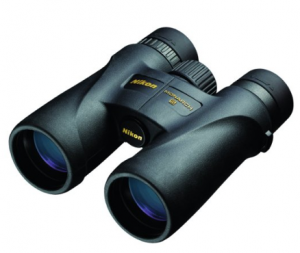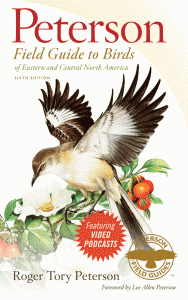OK, so now you’ve decided that you’d like to become a birder. Maybe a friend or someone in your family is trying to get you interested. Maybe you’ve just seen an interesting colorful bird and now want to find more. Maybe you are now retired and have time to pursue new interests. Regardless of how or why you begin with this hobby, birding can be overwhelming as a beginner and it can be intimidating to ask for help from some of the experts who are around. If this sounds familiar, I will be compiling a series of recommendations here to help you on your way. We’ll start this series with three tidbits of advice.
1. Hang in there. Probably the best place to start is by saying that if it becomes difficult in the beginning that you shouldn’t give up. Birding is a great hobby that will provide rewards for years and years and years to come. As your birding experience grows, the common birds eventually will become easy to identify, but a new group of challenge s, including rarer birds, birds in different plumages, birds in different locations, and learning bird songs will continually arise and present new challenges and new opportunities to learn. Yes, it can be tough in the beginning when it feels like you don’t know anything, but turn the difficulties into a positive. For example, as an experienced birder who has seen more than 1,200 species, it is tough for me to find new birds locally, but I am often envious when I am with new birders who are seeing a few new species every day. Enjoy the thrill and all the new things you are learning during your earliest birding adventures.
s, including rarer birds, birds in different plumages, birds in different locations, and learning bird songs will continually arise and present new challenges and new opportunities to learn. Yes, it can be tough in the beginning when it feels like you don’t know anything, but turn the difficulties into a positive. For example, as an experienced birder who has seen more than 1,200 species, it is tough for me to find new birds locally, but I am often envious when I am with new birders who are seeing a few new species every day. Enjoy the thrill and all the new things you are learning during your earliest birding adventures.
2. Get decent optics. One of the advantages of birding is that it doesn’t have to be an expensive hobby. At a simple level, the essential equipment that a beginning birder needs is a pair of binoculars and a field guide. That’s it. As your interest in the hobby grows, you will find yourself buying more equipment: a spotting scope, specialized identificati on guides, photographic equipment, birding apps, etc. But don’t worry about them now. Let’s start at the beginning: what binoculars to get? The range of cost and quality is quite broad, with top-of-the-line binoculars costing over $2,600! If you are a Wall St. executive and cost is not a concern, feel free to start there. But for the rest of us that is not a realistic starting point. On the other hand, using a clunky old pair of hand-me-down binoculars that belonged to your grandparents or buying the cheapest binoculars on the market now will only result in frustration and difficulty in finding birds. Fortunately, excellent binoculars can be obtained for ~$250 that will last for many years. The most popular model in this range is the Nikon Monarch5 8×42 binoculars, currently available for $247. I used a pair of similar Monarchs for more than 10 years and still have them as my backup pair. Monarchs are probably the most common binoculars seen on group birding walks; the optics are terrific, they are waterproof and fogproof, can focus to within 8 feet, and Nikon provides a lifetime warranty. After you’ve been birding for 10 or more years you might want to upgrade, but as a beginner, the Nikon Monarchs or similar quality binoculars is a great place to start. The only caveat to this recommendation is that no pair of binoculars will be perfect for every person; if you wear eyeglasses or if your eyes are closer together or further apart than most people, then test them yourself before buying to ensure that they ‘feel’ right to you. It is well worth the investment to avoid the frustration caused by poor optics.
on guides, photographic equipment, birding apps, etc. But don’t worry about them now. Let’s start at the beginning: what binoculars to get? The range of cost and quality is quite broad, with top-of-the-line binoculars costing over $2,600! If you are a Wall St. executive and cost is not a concern, feel free to start there. But for the rest of us that is not a realistic starting point. On the other hand, using a clunky old pair of hand-me-down binoculars that belonged to your grandparents or buying the cheapest binoculars on the market now will only result in frustration and difficulty in finding birds. Fortunately, excellent binoculars can be obtained for ~$250 that will last for many years. The most popular model in this range is the Nikon Monarch5 8×42 binoculars, currently available for $247. I used a pair of similar Monarchs for more than 10 years and still have them as my backup pair. Monarchs are probably the most common binoculars seen on group birding walks; the optics are terrific, they are waterproof and fogproof, can focus to within 8 feet, and Nikon provides a lifetime warranty. After you’ve been birding for 10 or more years you might want to upgrade, but as a beginner, the Nikon Monarchs or similar quality binoculars is a great place to start. The only caveat to this recommendation is that no pair of binoculars will be perfect for every person; if you wear eyeglasses or if your eyes are closer together or further apart than most people, then test them yourself before buying to ensure that they ‘feel’ right to you. It is well worth the investment to avoid the frustration caused by poor optics.
3. Birding books. There is an entire industry of birding books out there, enough to keep even the most refined expert birders occupied. But which of those books is appropriate or necessary for a beginning birder? For me the best field guide for a beginner is the Peterson Field Guide to the Birds of Eastern and Central North America (or Western North America if that is where you live). The Peterson’s Guide, which first was published in 1934 and is now in its 6th edition, was the first modern field guide for birders and to me still remains the best guide for beginners. It focuses on the more common birds, the illustrations are large, with arrows that point to the essential field marks that we should be looking for. Maps are provided in the back showing the geographic distribution of each species. The Peterson’s Guide also comes in a large-format edition and they now offer a Peterson’s “First Guide” that includes only the 180 most common birds in North America, if those are your preferences. Another excellent option is the Sibley Field Guide to Birds of Eastern North America (or Western North America if that is where you live). To me, the Sibley Guide is actually a better field guide, but it seems targeted for more advanced birders. Like the Peterson’s Guide, Sibley also has wonderful illustrations with arrows to point out the essential field marks. There are more illustrations in Sibley, including juvenile and female plumages, and birds in flight, but by necessity the illustrations are smaller than in Peterson. Sibley also includes more rarities that can appear in your area, but since those birds are unlikely to found by beginners, they can be a distraction. One advantage to Sibley is that the range maps are placed alongside the illustration, not in the back of the book, making it easier to know if that bird is likely to be seen in your area. Maybe it is just a matter of taste; these are both excellent and influential field guides, but I think Peterson’s is better for beginners, while Sibley is better for advanced birders. Whichever book you buy, don’t leave it in your car or at home for future reference, but instead bring it with you into the field and use it thoroughly, on the spot. When you find a new bird and read the accompanying commentary immediately, you will learn more, because the guide will point out secondary identification points to look for that you might have missed, occasionally behaviors will be described, potentially confusing species might be mentioned, or the illustrations might help you to find females or immature birds in the area. If you only look that information up after you get home or to your car, it will be too late.
where you live). The Peterson’s Guide, which first was published in 1934 and is now in its 6th edition, was the first modern field guide for birders and to me still remains the best guide for beginners. It focuses on the more common birds, the illustrations are large, with arrows that point to the essential field marks that we should be looking for. Maps are provided in the back showing the geographic distribution of each species. The Peterson’s Guide also comes in a large-format edition and they now offer a Peterson’s “First Guide” that includes only the 180 most common birds in North America, if those are your preferences. Another excellent option is the Sibley Field Guide to Birds of Eastern North America (or Western North America if that is where you live). To me, the Sibley Guide is actually a better field guide, but it seems targeted for more advanced birders. Like the Peterson’s Guide, Sibley also has wonderful illustrations with arrows to point out the essential field marks. There are more illustrations in Sibley, including juvenile and female plumages, and birds in flight, but by necessity the illustrations are smaller than in Peterson. Sibley also includes more rarities that can appear in your area, but since those birds are unlikely to found by beginners, they can be a distraction. One advantage to Sibley is that the range maps are placed alongside the illustration, not in the back of the book, making it easier to know if that bird is likely to be seen in your area. Maybe it is just a matter of taste; these are both excellent and influential field guides, but I think Peterson’s is better for beginners, while Sibley is better for advanced birders. Whichever book you buy, don’t leave it in your car or at home for future reference, but instead bring it with you into the field and use it thoroughly, on the spot. When you find a new bird and read the accompanying commentary immediately, you will learn more, because the guide will point out secondary identification points to look for that you might have missed, occasionally behaviors will be described, potentially confusing species might be mentioned, or the illustrations might help you to find females or immature birds in the area. If you only look that information up after you get home or to your car, it will be too late.
More advice can be found HERE in part 2 of this series.